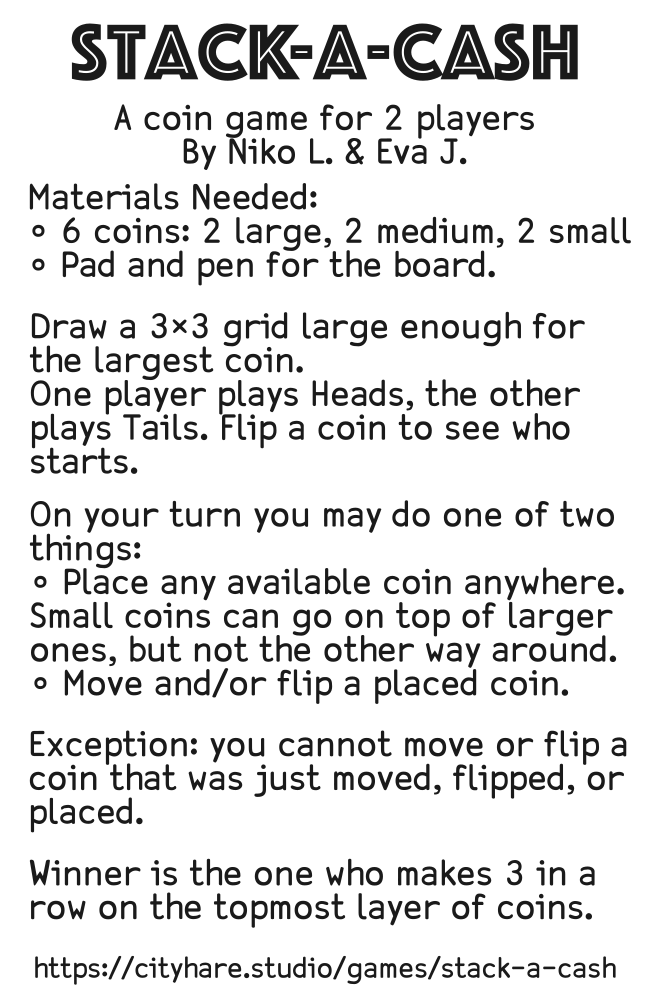Stack-a-Cash is the second game in my series of business card games, the first being No Pair.
Stack-a-Cash came about as a challenge to see if I could make a game that would fit entirely on the back of a business card. The front being reserved for contact info.
Here’s the game I came up with with the help of my partner:

A friend of mine jokingly said that tic-tac-toe (naughts and crosses) fits on a business card, which naturally got the gears turning.
Doing some surface-level research, I couldn’t find any games that fit this game exactly. Some have similar elements, but not all of them combined.
In the most basic terms, Stack-a-Cash is a reimagining of tic-tac-toe, which uses the fact that coins have two sides and varying dimensions to mess with the game quite significantly.
The game is now essentially played in three dimensions and lets you set up traps for your opponent.
Rules in Detail
Given that a business card is rather cramped, I think it’s best if I explain the rules in detail here.
Setup
To play this game you need six coins and a piece of paper to draw the board on. The board needs to be big enough for the largest coin to fit comfortably in any of the nine spaces.
You need two large, two medium, and two small coins.
The size here refers to the physical size of the coins, not the denominations.
One player plays Heads, the other plays Tails.
Flip a coin to determine who goes first.
Gameplay
The object of the game is simply to make three of your own side on the topmost layer either horizontally, diagonally, or vertically.
On your turn you can do one of the following two things:
- Place a coin from the supply anywhere on the board.
Any coin will do, as long as it’s in the supply.
It can even be placed on top of other coins.
Naturally, this is the only option in the first two turns. - Move and/or flip any coin.
In other words- Move a coin without flipping it
- Flip a coin without moving it
- Or move and flip a coin
Note: you can only stack smaller coins on top of larger ones, not the other way around.
Because you can move the other player’s coins, having the ability to also flip them to your side is important.
Important note: You cannot move or flip a coin that was just placed by the other player. This is simply to prevent stalemates. All other coins are fair game.
Be careful you don’t lay traps for yourself!
Links
- Board Game Geek Page: https://boardgamegeek.com/boardgame/419875/stack-a-cash

